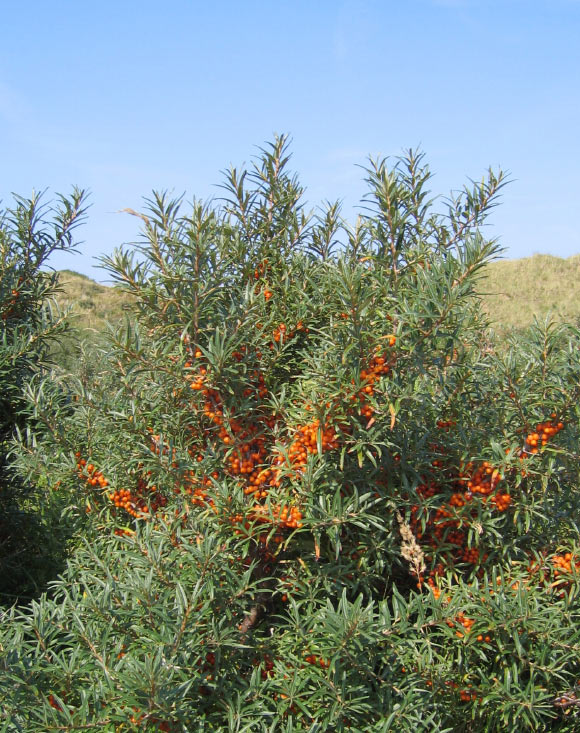Berries of the sea buckthorn (Hippophae rhamnoides) grown in Canada showed promising health benefits induced by their rich and diverse polyphenolic profile and need to be considered for further commercial expansion as a bioactive-loaded superfruit.
Sea buckthorn is a deciduous, thorny plant found along the coasts of northwestern Europe as well as temperate regions of central Asia.
Its berries and leaves are widely used for their nutritional, pharmaceutical and functional properties — sea buckthorn oil is rich in omega-3 and omega-6 fatty acids, vitamins E, B, and A and polyphenols.
In Canada, the plant was introduced in the early 2000s following research by governmental agencies on the crop’s commercial potential.
“Sea buckthorn is a unique crop with vast potential for utilization,” said Renan Danielski, a Ph.D. student at the University of Newfoundland.
“Popular in Asia and North-Western Europe, there is an opportunity to replicate this success in North America by leveraging the unique qualities of locally grown varieties.”
Motivated by the experimental status and limited commercialization of sea buckthorn in North America to date, Danielski and Memorial University of Newfoundland’s Professor Fereidoon Shahidi set out to characterize the unique composition of polyphenols, a class of compounds with antioxidative properties, in Canadian cultivars.
“Understanding how our cultivar compares globally can help communicate the benefits to consumers and establish a market presence,” Professor Shahidi said.
The findings highlight the presence of key polyphenolic compounds in sea buckthorn pomace and seeds, each boasting potential health benefits ranging from cardiovascular protection to anti-inflammatory properties.
Importantly, geographical factors influence the polyphenolic profile of sea buckthorn berries, with the researchers identifying several distinct compounds with enhanced bioactivity which are only contained in the sea buckthorn cultivar grown in Newfoundland.
Moreover, the sea buckthorn extracts demonstrated promising in vitro antidiabetic and anti-obesity potential, paving the way for further investigation into their mechanisms and potential therapeutic applications.
“This is a first step in understanding how sea buckthorn polyphenols can modulate our physiology in a beneficial manner,” Danielski said.
“Future research needs to focus on understanding the mechanisms behind those effects and further experimentation using animal models and humans.”
“If these effects are confirmed in vivo, we can envision the use of sea buckthorn polyphenols for therapeutic and pharmacological purposes, aiding in the prevention and treatment of diabetes, obesity, and many other conditions.”
The results were published in the Journal of the Science of Food and Agriculture.
_____
Renan Danielski & Fereidoon Shahidi. Phenolic composition and bioactivities of sea buckthorn (Hippophae rhamnoides L.) fruit and seeds: an unconventional source of natural antioxidants in North America. Journal of the Science of Food and Agriculture, published online February 15, 2024; doi: 10.1002/jsfa.13386


